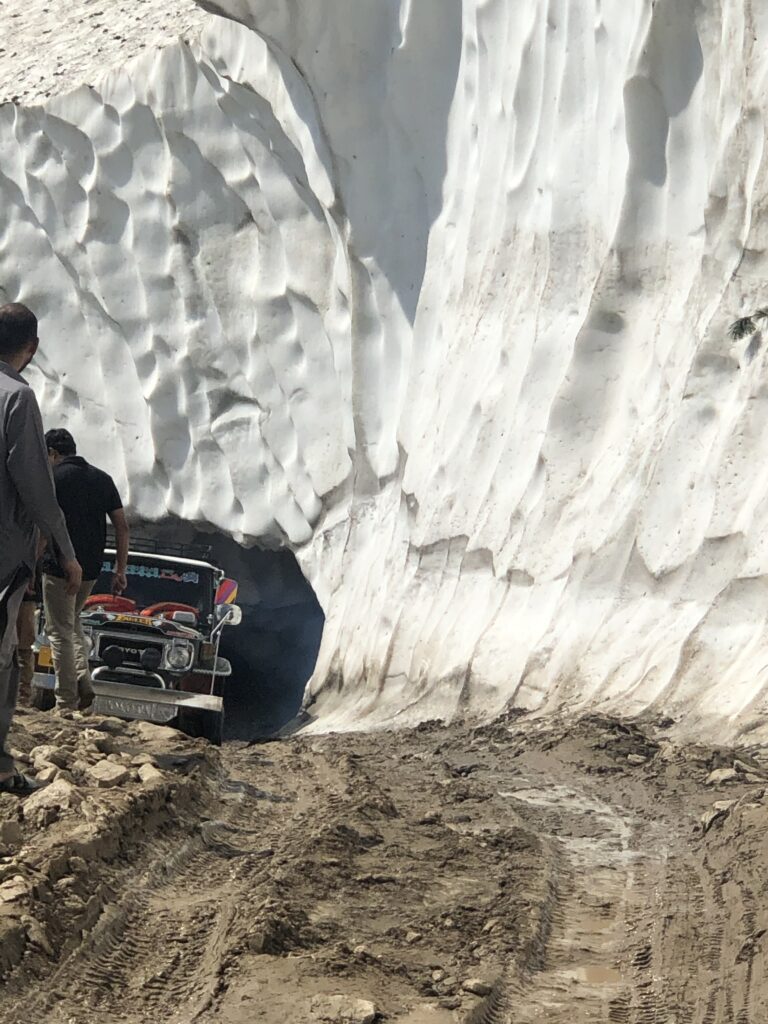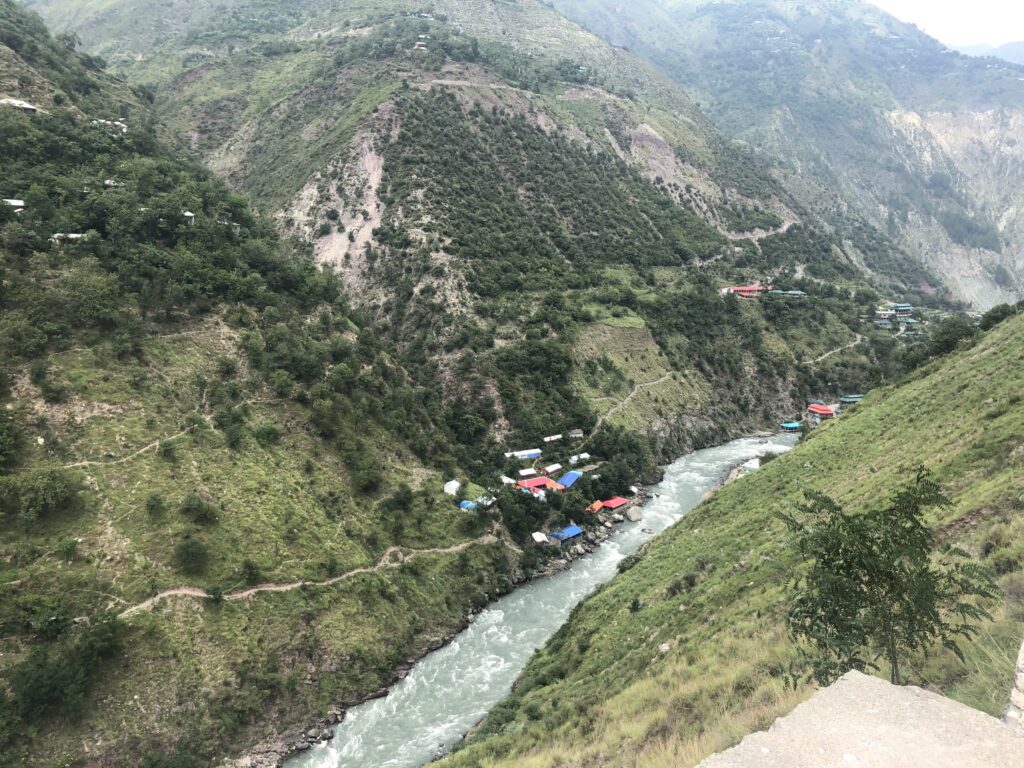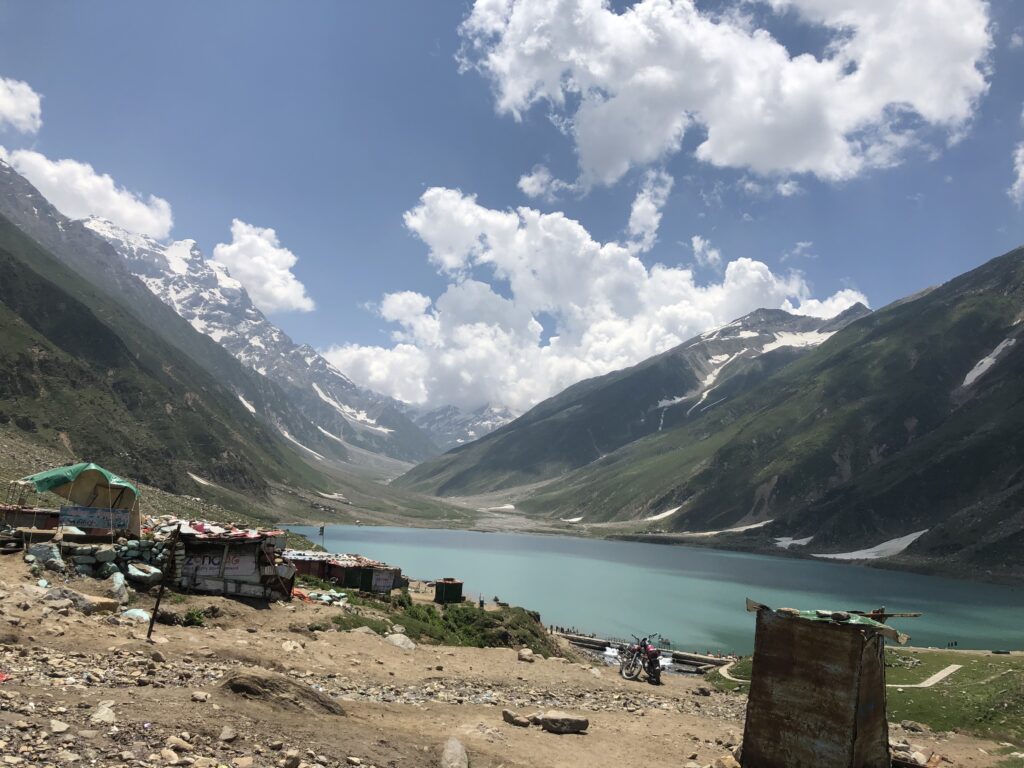LifeStyle
Destination Pakistan

By Shanaz Ramzi
As an ardent supporter of promoting local tourism, an opportunity to visit parts of Pakistan’s northern areas came when my son informed that he was planning a trip to the north with his in-laws and some of his friends and asked us to join as well.
So, while the rest of the party left earlier, driving from Karachi all the way, my husband Zul and I flew into Islamabad where we had rented a four-wheeler to drive up to the Balakot checkpost and meet up with the others. The motorway was of course, everything people say it is – a fantastic drive complete with two highly impressive tunnels at Abbottabad – but the one thing sorely missing en route, right up till Mansehra, which was at an-hour-and-a-half drive from Islamabad, was washrooms. I was quite surprised that there were none on the way as I had heard that the Punjab government had made some state-of-the-art ones off the motorway, which one could use at a payment of rupees 50 per person.
Driving for another two hours we reached Balakot checkpost, the gateway to Kaghan Valley, and waited for the rest of our party to catch up. I had heard so much about the beauty of Kaghan Valley and its green hills and thick forests, that the relatively uninspiring landscape and mountains shorn of trees that we passed came as quite a shock.
Stopping only to take pictures at the raging Kunhar River, the 166 km river that originates at Lake Lulusar and is the main feature of Kaghan Valley, we spotted signage announcing fresh trout available along its banks and passed many restaurants that served just trout.

The road all the way had been perfect, and in another 45 minutes we reached the town of Kawai. Nothing prepared us for the trek that awaited us thereafter, to our hotel in Shogran, one of the most beautiful plateaus in the valley. The one-hour drive to our hotel – Cedar Wood Resort — from Kawai was via a narrow, steep, winding, uneven, rocky track that is only recommended if you are in a four-wheeler. The good news is that all the hotel owners – yes, all hotels in Shogran are only accessible via this track – know this and have kept a parking spot at Kawai, at the foot of this path, for those adventurous tourists who may have set out to explore the northern areas in a sedan rather than a SUV. So you can park below and then take the hotel jeep up to the hotel.
After what seemed to be forever, we finally reached our hotel – an aesthetically beautiful resort boasting a profusion of seasonal flowers and attractive landscapes. That’s where its merits ended. I wish the owners had spent as much time on the maintenance of their establishment and on providing the basic amenities that any seasoned traveler looks for, as they had done on beautifying the place, for the bathrooms were a disaster – the majority of the flushes of the WCs were not working, and the so-called ‘cleaned’ bathrooms were a mess. The staff had literally hosed down the bathroom after the rooms’ occupants had left – toilet roll, soaps, et al — and then left them wet for the next set of guests to check-in.
To make matters worse, there was no running hot water, and even in the peak of summer it was too cold to take a shower. Obviously, trained staff and quality service were not their strength, which is such a shame as the ‘resort’ could be a delight if they would just spruce up their act a bit. The establishment was on its way to setting up a chair lift, so it seems the problem was not a shortage of funds to invest in its upkeep but having a different set of priorities.
Our initial plan had been to stay at Shogran for three nights and to do day trips to all the nearby tourist areas, but having done the trek up to the hotel once, we were in no mood to do it daily. Hence, we checked out and made our way towards Naran, where we had tentative bookings for another hotel.
En route we stopped at Trout Park Fish Point and Restaurant for lunch – a treat we had been dreaming about since the day before! With clear streams gushing forth and charpoys laid out over running water where one could sit and dip one’s feet in its icy cold temperatures while partaking of delectable fried trout, the wayside eatery was a refreshing stop in more ways than one. The brown trout from Kunhar River and rainbow farm trout fried in fresh masala prepared by the cooks, were devoured in no time, as was the karhai chicken, (prepared in a wok) and mash daal (white split lentils).
Naran turned out to be extremely crowded – it was a weekend that day – and so congested with hotels stuck to one another that we decided to drive to Batakundi instead, which proved to be the best decision we could have made.
The isolated Pine Top Hotel overlooking magnificent views of Kaghan Valley’s highest peaks, was unoccupied, so we had the entire resort to ourselves. The chalets, each comprising two rooms with clean, attached bathrooms, kitchen, and a sitting room were just what the doctor ordered, and the cool, low temperature was the icing on the cake.

The next morning after breakfast we left for Naran and couldn’t believe it was the same town we had passed through the day before. Practically desolate now as it was a working day, we booked jeeps from there to take us up to Lake Saiful Muluk. Although private SUVs could also do the trek – and we did pass some on the way – they are discouraged by the locals, both because they want the jeep mafia to thrive since it is their only source of livelihood, and because parts of the terrain are treacherous and do require local expertise. It involves around 45 minutes of bumpy riding that is akin to a roller-coaster ride, but less smooth, and crosses a massive glacier on the way, the track in front of which is eroded, water-filled and difficult to traverse. On our way back, we witnessed a jeep that had got stuck there and had to turn back. We were told that at the peak of the tourist season, there are an average of 1500 jeeps doing the trek, and a long queue plying the narrow path.

Located at 10,500 ft above sea level Lake Saiful Muluk is described by one travel magazine that I had consulted before embarking on the journey, in the following words: ‘No trip to Kaghan Valley is complete without a visit to the legendary Lake Saiful Muluk. Words cannot describe the beauty and serenity of the setting and picture postcards do no justice. The crystalline waters of Lake Saiful Muluk reflecting the surrounding snow-peaked mountains is an image that must be seen in person’. So, when we took up the challenge of undertaking this trek, we had this vision in mind.
What we saw when we finally arrived at the parking area for the jeeps, was a garbage dump. Passing it, we climbed down a steep path and found ourselves flanked on both sides by shabby stalls selling pakoray, (fritters), tea, toys and whatnot, beyond which was a lake. That was our first impression of Lake Saiful Muluk. Kicking ourselves that we had tortured our backs undertaking this horrendous journey for this anti-climax of a vision, we decided to make the best of a bad bargain and went down to the lake, which left those among us who had seen it ten years ago, just as depressed, as they felt its water level had gone down considerably and it no longer looked as impressive as it did then.
Since the lake had a little barrage of sorts that allowed the water to collect in a stream flanked by rocky formations, we climbed down there to take some pics. With our moods slightly improved, we sat down to hear the story of Saiful Muluk from the baba (old man) who is always looking for an audience. As legend goes, the lake is named after Prince Sauful Muluk who fell in love with a fairy princess living in these mountains. She had been kept captive by a white giant and Muluk helped her to escape with him. According to the legend they live to this date in a cave near the lake. The old man tells the tale in Pushtu and is happy to take whatever you give him for his efforts, as indeed are a lot of other locals who hound you to hear the same story.
We then decided to take a boat ride on the lake since there was nothing else to do, instead of going back so soon after arriving and braving the horrendous ride again. It was a good thing we did because when you move away from the filth all around you and reach the centre of the lake, you do eventually see what all the fuss is about. Surrounded by impressive snow-clad mountains, crowned by the summit of Malika Parbat (Queen of the Mountains), the view is undoubtedly picturesque when seen from a point where there are no nearby eyesores to ruin the view.
Our boat owner took us across the lake where we were allowed a ten-minute stop to get off and slide down a glacier. Would you believe what we saw there, among other things – a dirty pamper! To the credit of the authorities, there were dustbins everywhere at Lake Saiful Muluk entreating visitors to throw rubbish in the bins but of course, our merry-making public which wants to have a good time in natural, scenic environs were not pushed about leaving the place worthy of visiting even a second time!
On our drive down, some of us got off to take pictures under the massive glacier – a rare treat indeed — and then we headed back to Naran. After a scrumptious lunch at a hotel we went off for a walk along the only main road that Naran boasts of, from where we bought dry fruit and had matka chai. For those who have not tried the latter, this is a must – especially the Kashmiri tea, served in an earthenware glass.
Exhausted, we went back to our hotel to call it an early night, as the next day we were leaving for Islamabad, while those who were travelling by road were going further up to Hunza. I came back with the realization that we have so much to offer in terms of tourism but so much more that we have to set right before it can develop into a full-fledged industry.



